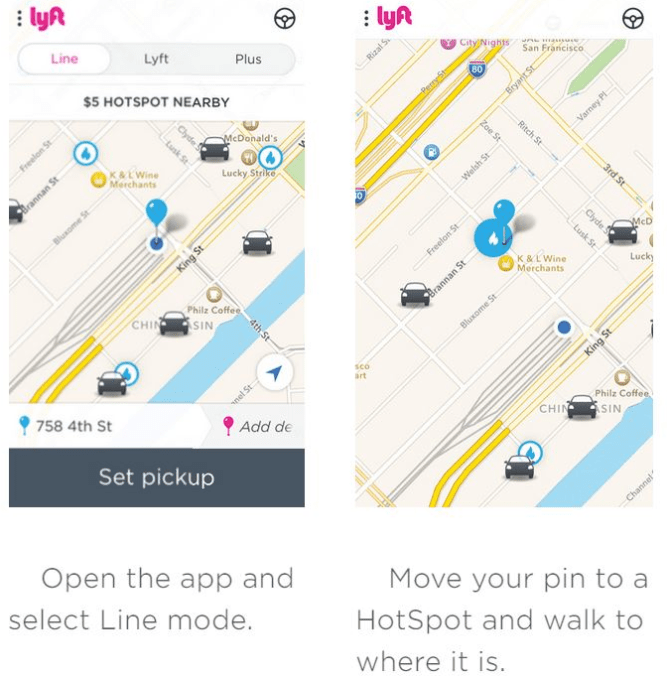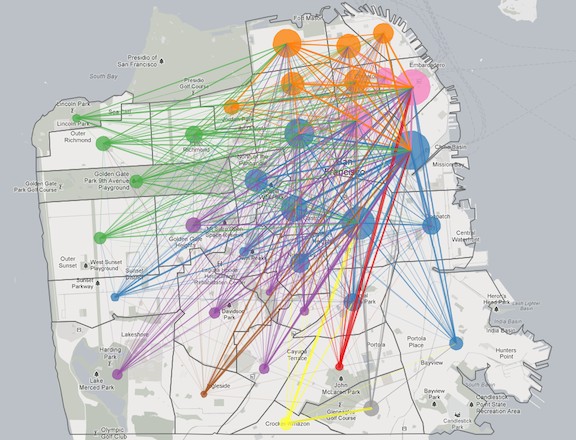
TechCrunch.com: One-way streets. Roads with nowhere to pull over. Forbidden U-turns. Sometimes your current location isn’t the most convenient place for Uber to pick you up. Walking 15 seconds around the corner or across the street to a better spot could cut five minutes off waiting to get picked up on or the journey.
That’s why Uber, Lyft, and other car services should tell us where to get picked up. A “Suggested Pickup Location” feature could save time and money for drivers and passengers.
Lyft has already taken a step towards this idea with its Lyft Line HotSpots — locations in popular parts of cities like San Francisco that if you’re willing to walk to, you can get a cheaper ride. These spots are typically in places with room for the driver to pull over that are facing the direction most passengers want to go, and aren’t trapped in a maze of one-ways. You just drag your map pin to one of the HotSpots to select it. Suggested Pickup Location would essentially create an optimal pickup hotspot close to whatever happen to be current coordinates.

Imagine if when you set your pickup pin, you could easily select one of these Suggested Pickup Locations. Uber can already see your exact location thanks to a recent addition to its terms of service. The car services could factor in any obstacles to retrieving you, the best path for the nearest driver to pick you up, and the planned route to your destination. This way, you could get picked up wherever the driver can get to you most easily that will put you going the right way to your drop-off.
Suggested Pickup Locations would help everyone.
Drivers waste less time and gas going to scoop up their fares, so they save money and can do more rides per hour on the job
Drivers avoid the stress of being honked at for stopping in the middle of the street where there’s nowhere to pull over
Bicyclists and other motorists don’t have to navigate around drivers waiting in the street
Car services can offer shorter pickup ETAs, making them more convenient and appealing to customers
Car services can boost their available car supply with the same number of drivers since getting started in the right direction makes routes take less time to run
Car services have more flexibility in increasing their tax since drivers naturally take home more money because they’re running more rides on less gas
Car services earn more money since mandatory minimum fees mean they typically make more money the more total rides they carry
Passengers get from hail to destination faster
Passengers pay less since they don’t take inefficient routes due to being picked up going the wrong direction

The only tradeoff is some product complication, and that passengers may have to walk a very small distance rather than being picked up right from their door. They’d still have the option to do the latter if they want to wait. In some locations, it might not be much faster. When it is, some passengers might agree just for the benefits above. If not, car services might incentivize users to go with a Suggested Pickup Location with a small discount, akin to Lyft’s HotSpots.
All the car services are in a battle for efficiency. It was recently revealed that Uber saw$470 million in operating losses on $415 million in revenue during a time period. Right now one of the biggest drains on efficiency is how long it takes to go from a rider hailing a car to them getting in. Minutes, even seconds saved could add up to serious money as more people drop their keys in favor of on-demand transportation.